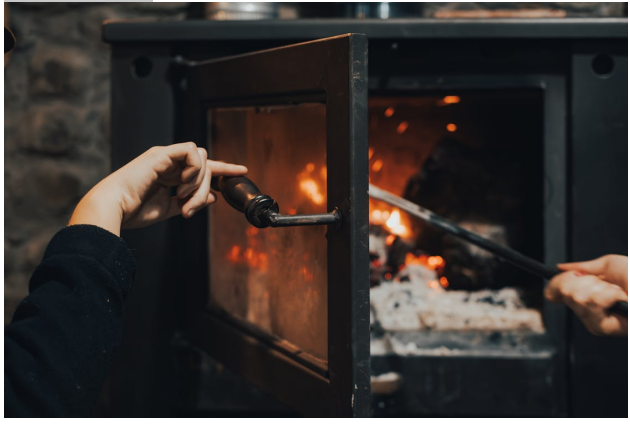
When the cold months roll around in Chili, NY, preparing your home for winter becomes more than just a seasonal chore. It’s essential for comfort and safety. The area’s chilly winters, with freezing temperatures and occasional heavy snowfall, can take a toll on your home if you’re not ready. From keeping your heating system running efficiently to preventing frozen pipes, the key to a stress-free season is preparation.
Taking the time to get your home winter-ready can help you avoid unexpected repairs, reduce energy bills, and make your living space cozy all season long. Whether you’re a longtime homeowner or new to the area, having a simple checklist can make the process much easier. Here’s a step-by-step guide to preparing your home for the winter season so you can stay warm, safe, and comfortable when the temperatures drop.
Before the temperatures dip too low, make sure your heating system is ready to handle constant use. Your furnace is the heart of your home during winter, and keeping it in top condition ensures both comfort and safety. Over time, dust buildup, worn components, or neglected filters can make your system less efficient, forcing it to work harder and increasing your energy bills.
Scheduling professional furnace maintenance in Chili, NY, helps ensure your heating system is running efficiently before the first cold snap hits. A qualified technician can inspect, clean, and fine-tune your system, identifying potential issues early to prevent unexpected breakdowns in the middle of winter. Regular maintenance not only extends your furnace’s lifespan but also keeps your home warm while saving energy.
In addition to professional service, you can replace filters every few months and keep vents free from obstructions to improve airflow. Checking your thermostat settings and testing your heating system early can also prevent surprises when the temperatures start to fall.
Even a small draft can make your heating system work harder and increase your energy costs. Before winter fully sets in, walk around your home and check for air leaks around windows and doors. If you feel cool air seeping in, it’s time to seal those gaps.
Weatherstripping, caulking, or using draft stoppers can go a long way in keeping warm air inside and cold air out. Thick curtains or insulated window film can also help retain heat, especially in older homes with single-pane windows. By sealing leaks early, you’ll create a more energy-efficient home and maintain a consistent indoor temperature throughout the season.
Frozen pipes are a common and costly winter problem, especially in unheated areas like basements, garages, or crawl spaces. Water expands as it freezes, which can cause pipes to burst and lead to extensive damage. To prevent this, insulate exposed pipes with foam sleeves or heat tape.
On extremely cold nights, let faucets drip slightly to keep water flowing and reduce the chance of freezing. Also, make sure you know where your home’s main water shutoff valve is located. Quick action can minimize damage if a pipe does burst. Simple preventive steps can save you from expensive repairs and major headaches later.
Your roof and gutters play a big role in protecting your home during winter. Heavy snow, ice, and debris can cause blockages or leaks that lead to water damage inside your home. Before the season begins, clear out leaves and debris from your gutters to ensure proper drainage.
Check your roof for missing or damaged shingles that could allow water to seep in. If possible, trim overhanging branches that might break under the weight of snow and fall onto your roof. Taking care of these tasks before winter storms arrive can prevent serious issues like ice dams or leaks. A little attention now goes a long way toward avoiding costly repairs later.
Good insulation keeps warm air inside and cold air out, which makes your home more comfortable and your heating system more efficient. Inspect your attic, basement, and crawl spaces to ensure insulation is in good shape and covers all critical areas.
Poor ventilation, on the other hand, can lead to condensation and even mold growth. Make sure vents are clear and allow air to circulate properly. If your home feels drafty or your energy bills have increased, adding insulation could be a worthwhile investment. It’s one of the most effective ways to stay warm and save money throughout the winter months.
As you rely more on heating systems during the winter, the risk of carbon monoxide buildup increases. Carbon monoxide is odorless and invisible, making detectors your first line of defense. Check that all smoke and carbon monoxide detectors are working properly.
Replace batteries if needed and test each unit to ensure they’re working. If your detectors are older than 10 years, consider replacing them entirely. This simple step can protect you and your family from dangerous situations while giving you peace of mind during the colder months.
Outdoor spaces need just as much attention as your home’s interior when preparing for winter. Start by disconnecting and draining garden hoses to prevent water from freezing and damaging outdoor faucets. If you have a sprinkler system, make sure it’s properly winterized to avoid burst lines.
Store patio furniture, garden tools, and grills indoors or under protective covers to prevent weather damage. Clear walkways and driveways of debris, and stock up on ice melt or sand for safety during icy conditions. Lastly, check exterior lighting to ensure paths and entryways are well-lit; shorter days mean you’ll rely on these lights more often.
Preparing your home for winter also means getting yourself ready for potential weather emergencies. Keep an emergency kit handy with essentials like blankets, flashlights, extra batteries, bottled water, and non-perishable food. It’s also smart to have a backup heating source or portable generator ready in case of power outages.
Make sure you have extra furnace filters, firewood if you have a fireplace, and any supplies needed for your pets. A little preparation now can make unexpected cold snaps or storms much easier to manage. Having these items ready brings peace of mind when severe weather strikes.
Winter in Chili, NY, can be harsh, but a little preparation goes a long way toward keeping your home safe, warm, and efficient. By inspecting your heating system, sealing drafts, protecting your plumbing, and winterizing outdoor areas, you’ll be ready to face whatever the season brings.
Simple steps like scheduling furnace maintenance, checking insulation, and preparing emergency supplies can make your home more resilient and comfortable all winter long. The key is to plan; once the first frost arrives, you’ll be glad you did.
With your home properly prepared, you can spend the cold months relaxing indoors, knowing that everything from your heating system to your roof is ready to handle the season. Winter might be cold outside, but inside your well-prepared home, it’ll be warm, cozy, and worry-free.

This post has been published by the admin of our website, responsible for content management, quality checks, and providing valuable information to our users.

